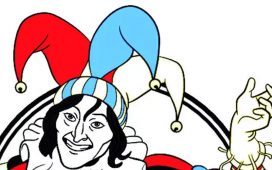
1. Source of energy: People or groups (extraversion) or solitude (introversion) – E-I preference
2. Type of information: Numbers, details, history (sensing) or macro-trends, future potential (intuition) – S-N preference
3. Basis of decisions: Facts (thinking) or people’s inputs or reactions (feeling) – T-F preference
4. Organising principles: Fixed structures such as lists or categories (judging) or flexible approaches (perception) – J-P preference
These four dimensions, each with two choices, lead to 16 different personalities. Organisations could ‘map’ teams to understand the overrepresented and underrepresented types and use this information to ensure that all styles were given the space to thrive. A common use-case is along the E-I dimension. Knowing that individuals with the introversion preference recharge and rebalance on their own – in solitude – a team event can accommodate such needs by providing some alone time without any planned group activity. Social media has created a platform for people to interact routinely. But unlike the workplace, where individuals interact to achieve a common goal, interactions on social media are without any group-wide targets. Yet, hypothesising a framework (similar to MBTI) to discern the different personality types on social media is an interesting exercise. One possible list:
Participation style Restricted(R) – only on selected topics, or participatory (P) – involved in most topics.
Image preference Conforming (C) – to an existing self-image, or building (B) – creating a new image.
Appetite for debate Engaged (E) – thinks hearts and minds can change with discussion on social media, or fact-based (F) – focus on sharing facts .
Use of smileys/emojis Supportive (S) — using them in support of appropriate text or tone or Liberal (L) – using excessive emojis.
The ‘participation’ dimension doesn’t require much explanation. Individuals either selectively engage with a few topics, or participate in many. On the topics they do engage with, they can display styles that fit the other three dimensions.
The ‘image’ dimension is the one that highlights the individual’s role or status within the group. There are, of course, many adjectives to describe the image of an individual within a group, and the same person can have a different image in different groups. Some common descriptors are ‘senior/elder,’ ‘junior/fresher,’ ‘expert/boss,’ ‘comedian’, ‘curious,’ ‘humble-braggart,’ ‘know-it-all,’ and ‘leg-puller.’ There are saltier adjectives as well that need use of asterisks.
Now, this dimension is not about the actual image of the person, but about the individual’s behaviour in conformance to an image. It’s either aligned with an already existing image, or it’s geared towards building an image. This dimension can also link to another facet – desire to get ‘likes’ on a post.
The ‘appetite for debate’ dimension is self-explanatory. The engaged individuals are the ones filling up inboxes without letting even one message go unanswered. They believe that people’s hearts and minds can change based on some messages exchanged on social media. On the other end of this spectrum are individuals who post only facts and refrain from voicing any opinions.
This dimension coupled with the above two can cause maximum confusion in groups. An engaged individual, participative in many conversations, trying to live up to an image of ‘expert,’ or ‘leader’ can cause many disagreements.
The fourth dimension is about the use of emojis – particularly the ‘smiley’ and its variants. ‘Supportive’ use generally enhances the emotion already suggested by the content. Eschewing the emoji when the content is clear enough is another example in line with ‘supportive’ use. A liberal use of emojis is the other end of this dimension.
MBTI was developed as a tool that can highlight individual preferences along dimensions relevant in the work setting. Even so, it doesn’t provide any insights on some basic characteristics that are important at work- integrity, team-orientation, work-ethic, etc.
The above-mentioned social media framework is just a hypothetical exercise, and without any validation from any source. Even with some scientific support, such a framework would have limited use-cases because on social media, unlike in organisations, there is limited accountability and consequence for any utterance. Therefore, self-regulation is the main attribute on display.
So, basically, only one dimension is required to evaluate a person/post: Is this person coming across as an ass or not?











